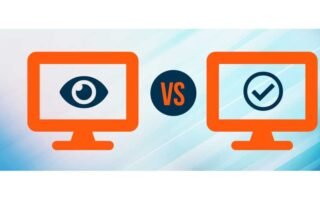In the fast-paced world of retail, where customers expect quick fulfillment, it’s essential to streamline operations for efficiency and cost-effectiveness. The global retail market continues to expand rapidly, valued at approximately $28.85 trillion in 2023 and projected to reach $31.31 trillion in 2024, with an estimated growth rate of 8.5% annually.
This robust growth highlights the need for efficient purchase order processes to handle increasing demand and maintain competitiveness. As the complexity of supply chains increases, well-optimized purchase order systems help businesses avoid costly disruptions and meet fluctuating demand seamlessly.
With this in mind, let’s explore strategies that retail businesses can adopt to optimize their purchase order processes.
Implementing Specialized Purchase Order Software
The first step in streamlining the purchase order process is implementing specialized software. Implementing innovative solutions such as purchase order software can help you manage purchase orders efficiently, reducing errors and saving valuable time. These platforms often include real-time tracking, allowing retail managers to monitor order status, detect potential delays, and respond proactively.
These systems also offer features like electronic data interchange capabilities that facilitate better communication and data transfer between suppliers and retailers. This software automates several steps in the purchase order process, from order creation to invoice matching and vendor payments, ensuring accuracy and consistency.
Standardizing Purchase Order Procedures
Standardization is key to streamlining any process. By documenting all purchase order procedures, businesses create a reference point that enhances training and compliance across the organization. Clearly defined procedures also enable quicker onboarding of new staff and minimize training time, as employees have a structured system to follow from the beginning.
Establishing clear, uniform procedures for purchase order creation and management helps retail businesses ensure that all employees follow the same steps, leading to fewer errors and delays. Training staff to understand and use these standards is crucial for maintaining order and efficiency across all business operations.
Centralizing Vendor Information
Keeping a centralized database of vendor information simplifies the purchase order process significantly. This database should not only store contact details but also track performance metrics and compliance data to aid in vendor management. By keeping detailed records of vendor reliability, cost history, and delivery times, businesses can make data-driven decisions when choosing vendors or renegotiating terms.
When vendor contacts, product details, and pricing information are easily accessible, creating and managing purchase orders becomes more straightforward and faster. This centralization helps in maintaining consistency and accuracy in ordering processes and vendor negotiations.
Integrating Inventory Management Systems
Linking inventory management systems with purchasing software is essential for keeping order accuracy and ideal stock quantities. This connection should offer notifications for low inventory and autonomously create purchase orders to replenish stocks, guaranteeing a steady availability of sought-after products.
This connection not only avoids situations where items are out of stock but also helps retailers prepare more effectively for seasonal peaks and promotional increases, lowering excess inventory and warehousing expenses. Additionally, this connection supports instantaneous tracking of stock, automated reordering, and improved prediction capabilities, minimizing the risk of either excessive inventory or shortages, which can impose significant costs on retail operations.
Utilizing Templates and Automation Tools

Templates and automation tools can further simplify the creation of purchase orders. Automated tools can also facilitate bulk ordering processes, which are particularly useful during peak demand seasons. Furthermore, automation facilitates the establishment of approval workflows that direct purchase orders through required management tiers, securing both compliance and accountability.
With the use of predefined templates, companies can swiftly create new orders that comply with their specifications, eliminating the need to build each one from the beginning. Automation also enhances the efficiency of repetitive tasks, including order approvals and communication with suppliers.
Regularly Reviewing and Optimizing the Process
Finally, continuously reviewing and optimizing the purchase order process is necessary to maintain efficiency. It’s important to leverage analytics to understand purchasing trends and adjust protocols and thresholds accordingly. Regularly updating purchase order templates and procedures based on operational feedback ensures that the process remains relevant and adapts to evolving business needs.
Regular audits can identify bottlenecks or areas for improvement, and feedback from staff can lead to better practices and tools being adopted. Evaluating the efficiency of the purchase order process aids in making decisions that can result in notable savings in both time and costs.
Conclusion
When retail businesses adopt these tactics, they can attain a more streamlined, efficient, and error-free purchase order process. Maintaining an active approach to updating systems and procedures helps retailers meet market demands and manage expenses effectively. Each step offers specific benefits that can collectively enhance the overall procurement strategy and help businesses stay competitive in a demanding market. As businesses continue to seek efficiencies in their operations, these steps provide a robust framework for improving purchase order management in any retail business.



